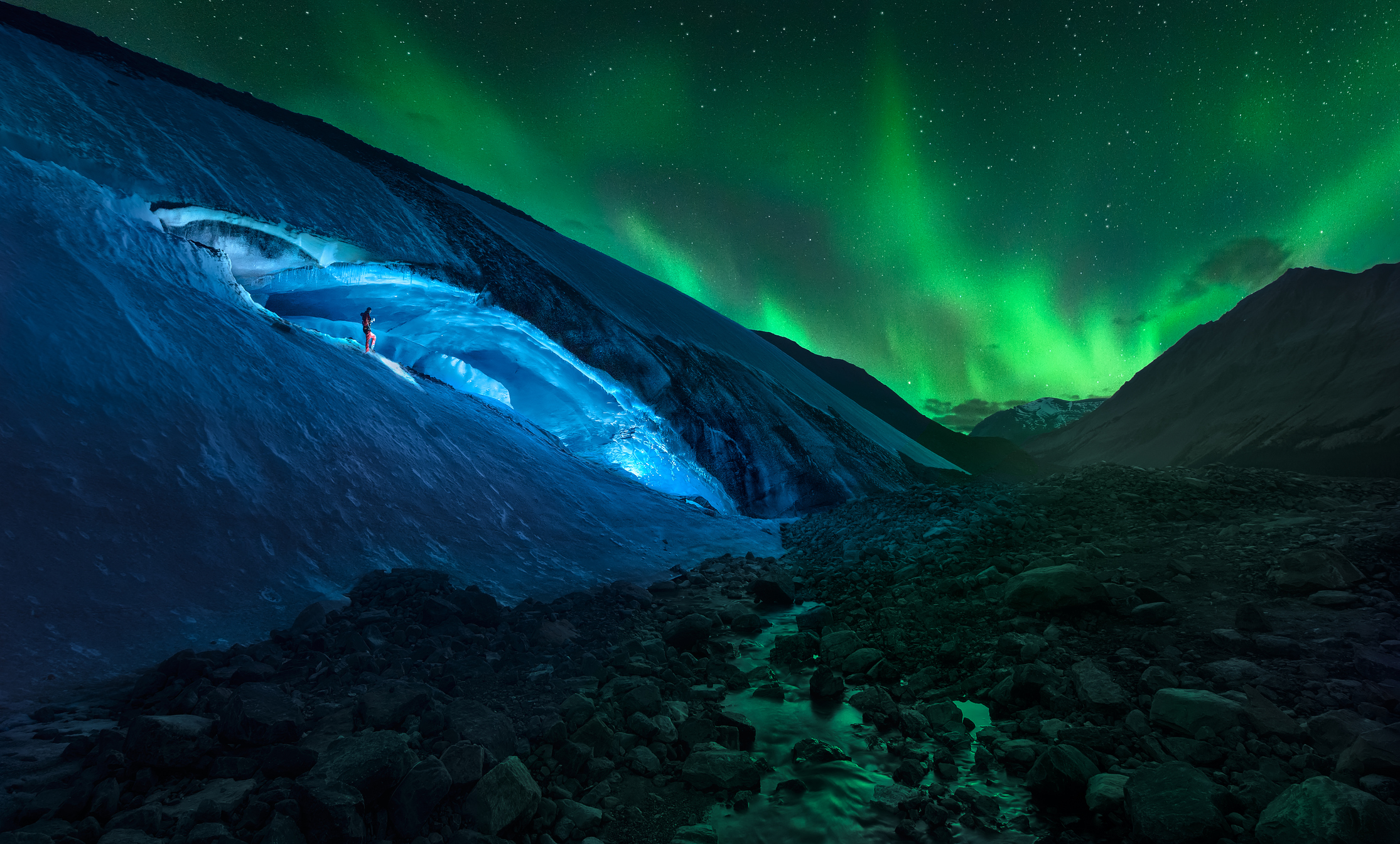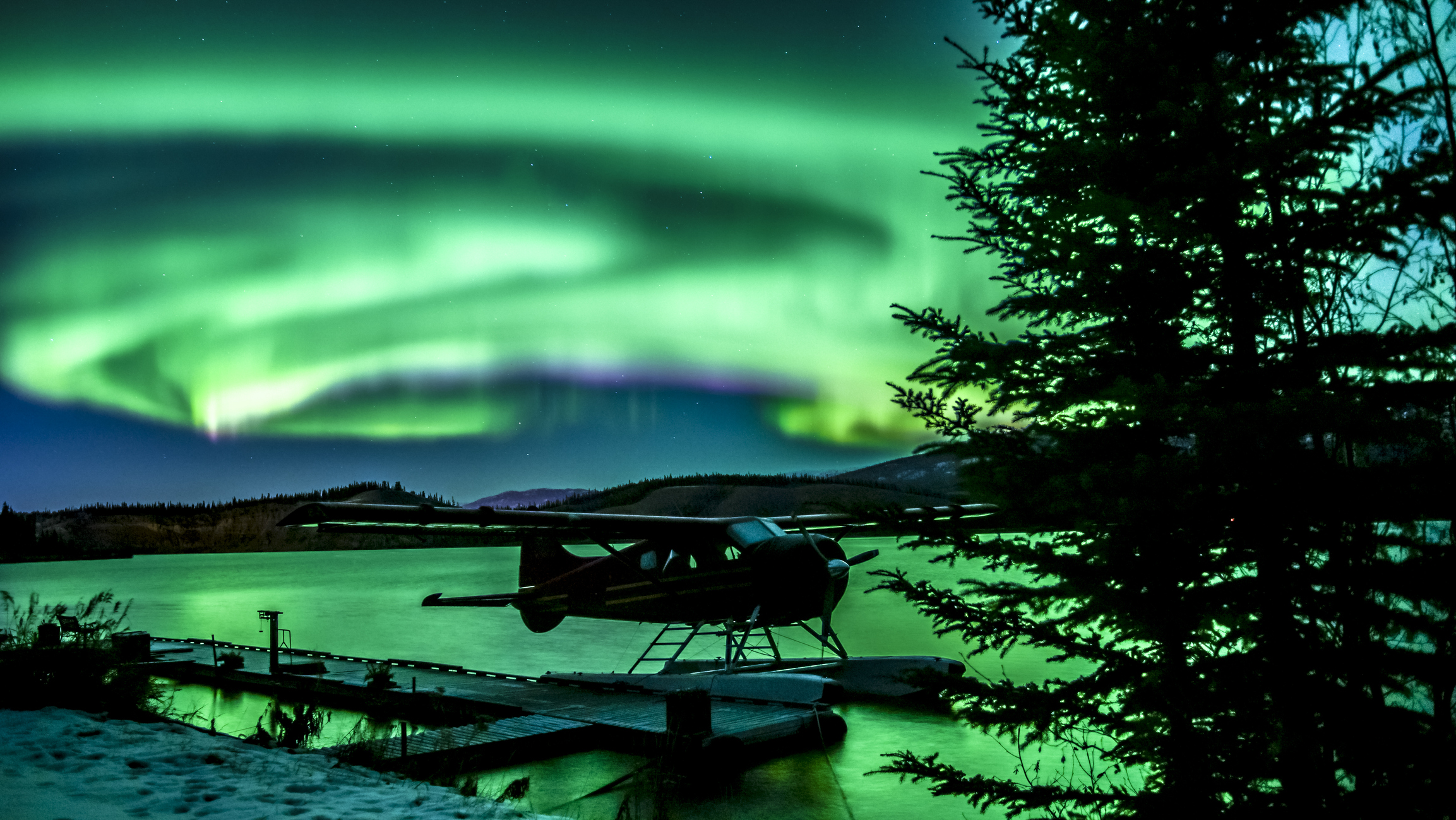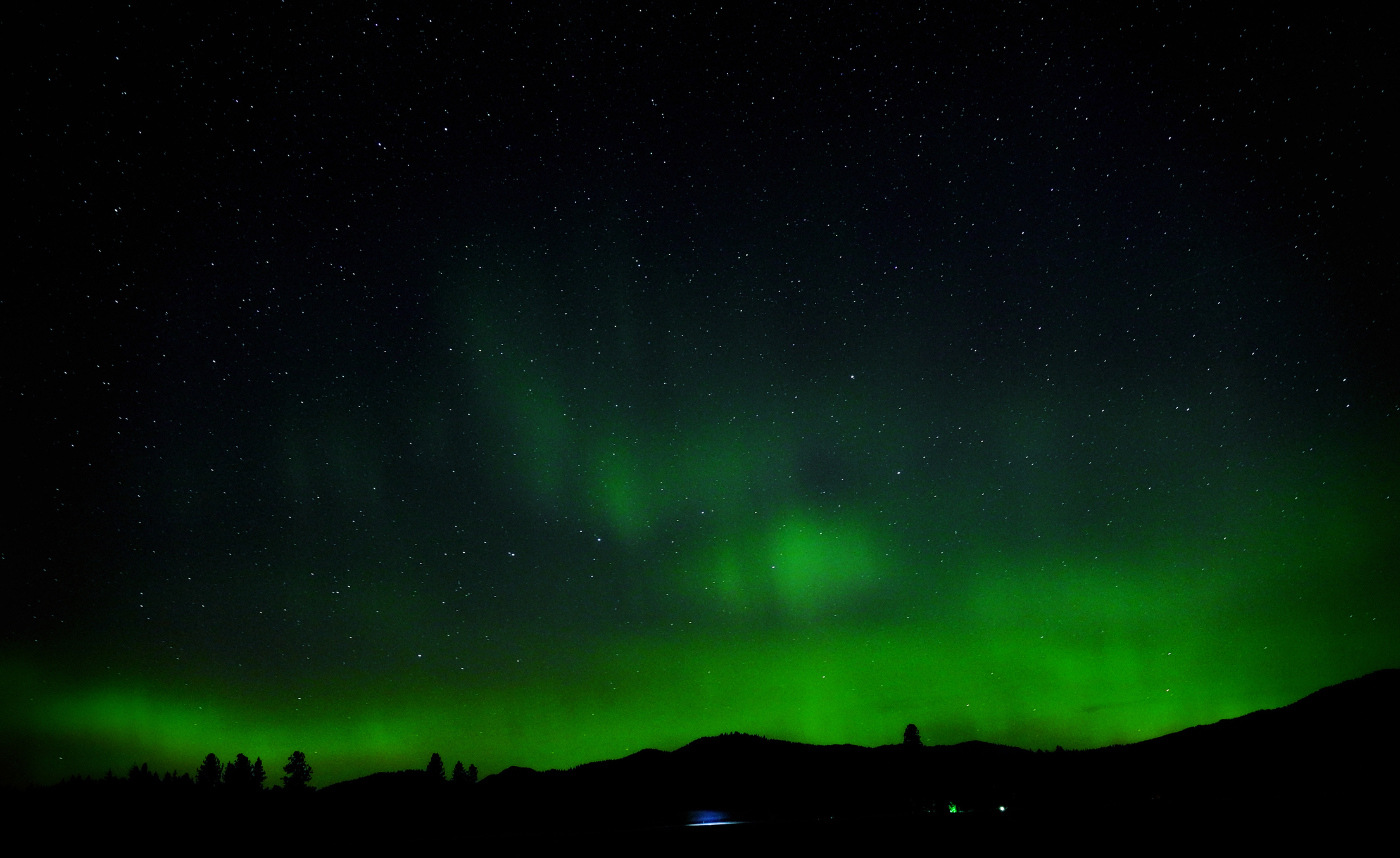
Make This the Year You Finally See the Aurora Borealis
Where can you see the northern lights? The elusive astronomical phenomenon is closer than you think, and now’s the time to go find it.
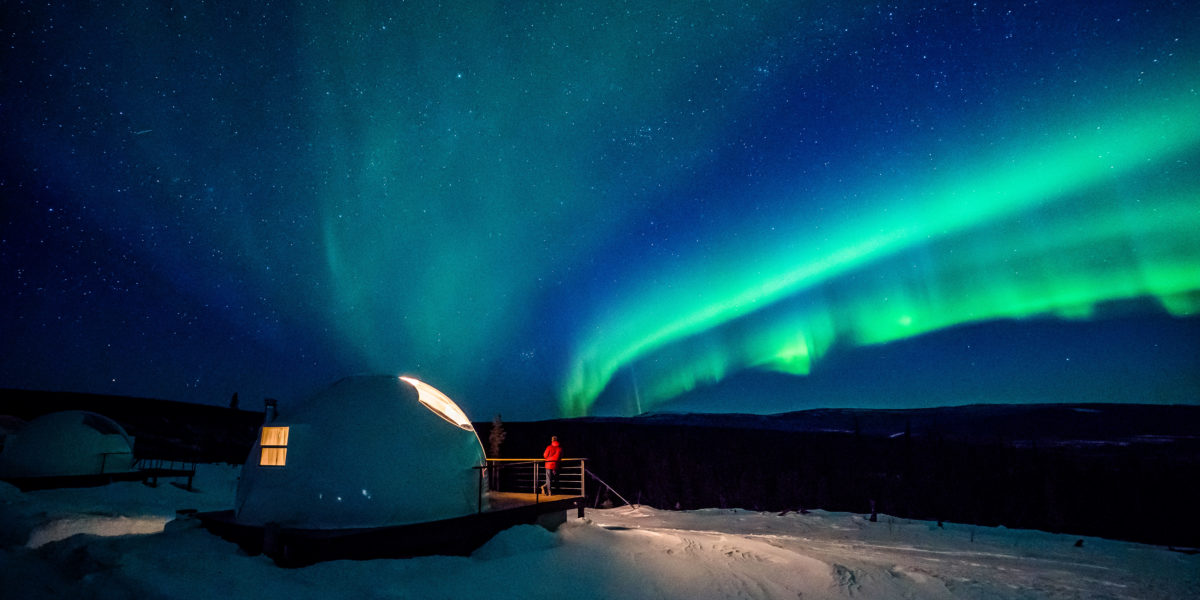
Thomas J. Story
As far as bucket-list experiences go, seeing the aurora is at the top of the list. People think they have to make the trek to northern Scandinavia to catch the spectacular light show, but we have some of the world’s best displays and photo opportunities right here in the States. So, where can you see the northern lights? The aurora is elusive, no matter what, but winter wonderlands in Alaska, Canada, and northern states are ideally positioned within the Aurora Oval (the ring where the activity is concentrated), making for great odds. Expect freezing temps—the lights are best seen in winter when nights are longest, and the show peaks during the iciest times, from 10 p.m. to 3 a.m. But these places offer plenty to do beyond aurora hunting; a couple spots even have cozy accommodations where you can see the spectacle from the comfort of your bed. With dog sledding, night photography classes, and hot springs as part of the trip, the cold will be the last thing on your mind.
Fairbanks’ Borealis Basecamp, Alaska
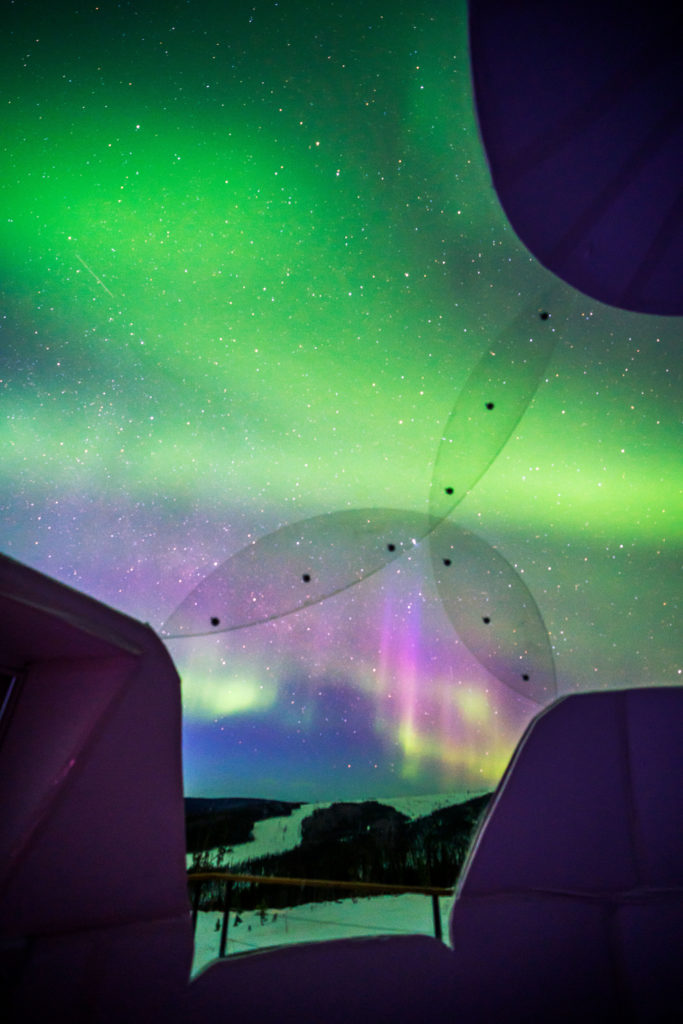
Thomas J. Story
It’s not unusual for locals in Fairbanks to see the aurora from their backyards or on a late-night drive home. But the further you get from urban light pollution, the more intense and frequent the sightings. If you’re looking for where to see the northern lights in Alaska, there’s no doubt Borealis Basecamp is your best bet. The hideaway, about an hour from Fairbanks, sits on 100 acres of pitch-black forest with nearly 250 nights of swirling northern lights views. And you don’t have to step outside to see the brilliant scene. Cozy up in your igloo-like pod—heated to 75 degrees, of course—and watch the aurora dance across the Arctic sky from your bed under a curved, clear roof. On one night of your stay, take a night photography class with neighboring Aurora Bear, which hosts guests at their off-the-grid, cozy cabin for an intimate gathering with home-cooked appetizers, good wine and beer, and hands-on lessons. Even if the lights don’t appear, you’ll learn how to capture them throughout the rest of your trip—and any time you return. By day, choose from a build-your-own-adventure menu of dogsledding, snowmobiling, ice fishing, and just about any Alaska winter activity you want.
Glacier National Park, Montana
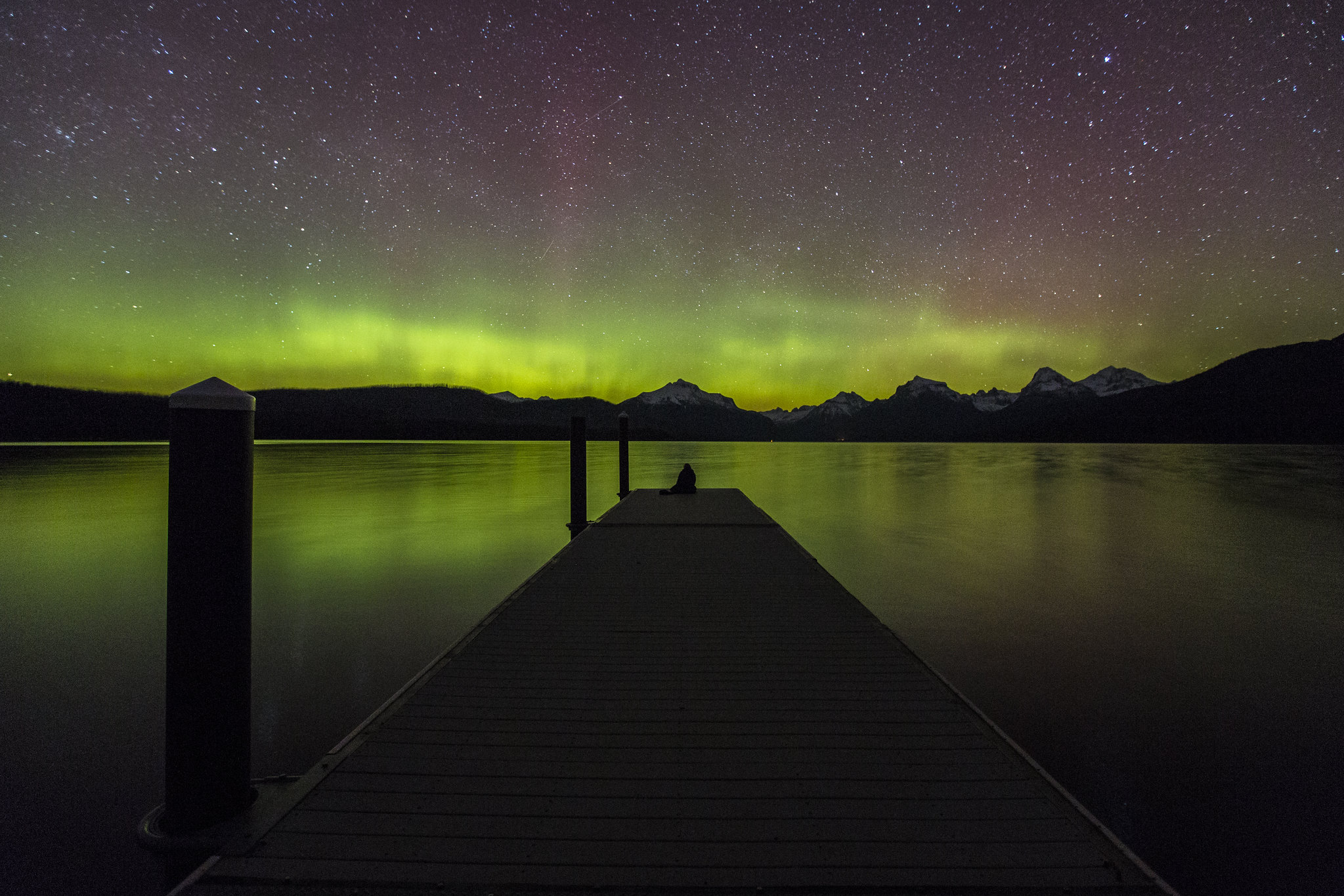
Courtesy of NPS /Jacob W. Frank
Montana’s Glacier, carved by prehistoric ice rivers and filled with 700 miles of hiking and biking trails, runs all the way to the Canadian border. And the park’s northern latitude offers aurora spottings when the geomagnetic activity is high enough (the Kp index, which runs from 0 to 9, needs to be at least 5). Late winter, when nights are longest and clearest, tends to see the most movement in the skies. A few miles from the western entrance, Lake McDonald is one of the best viewpoints for the aurora, as shades of green and violet reflect off the water, creating an ideal photo op. Up your odds for seeing the northern lights by sleeping at the lakeside Apgar Village Lodge & Cabins.
Denali’s Sheldon Chalet, Alaska
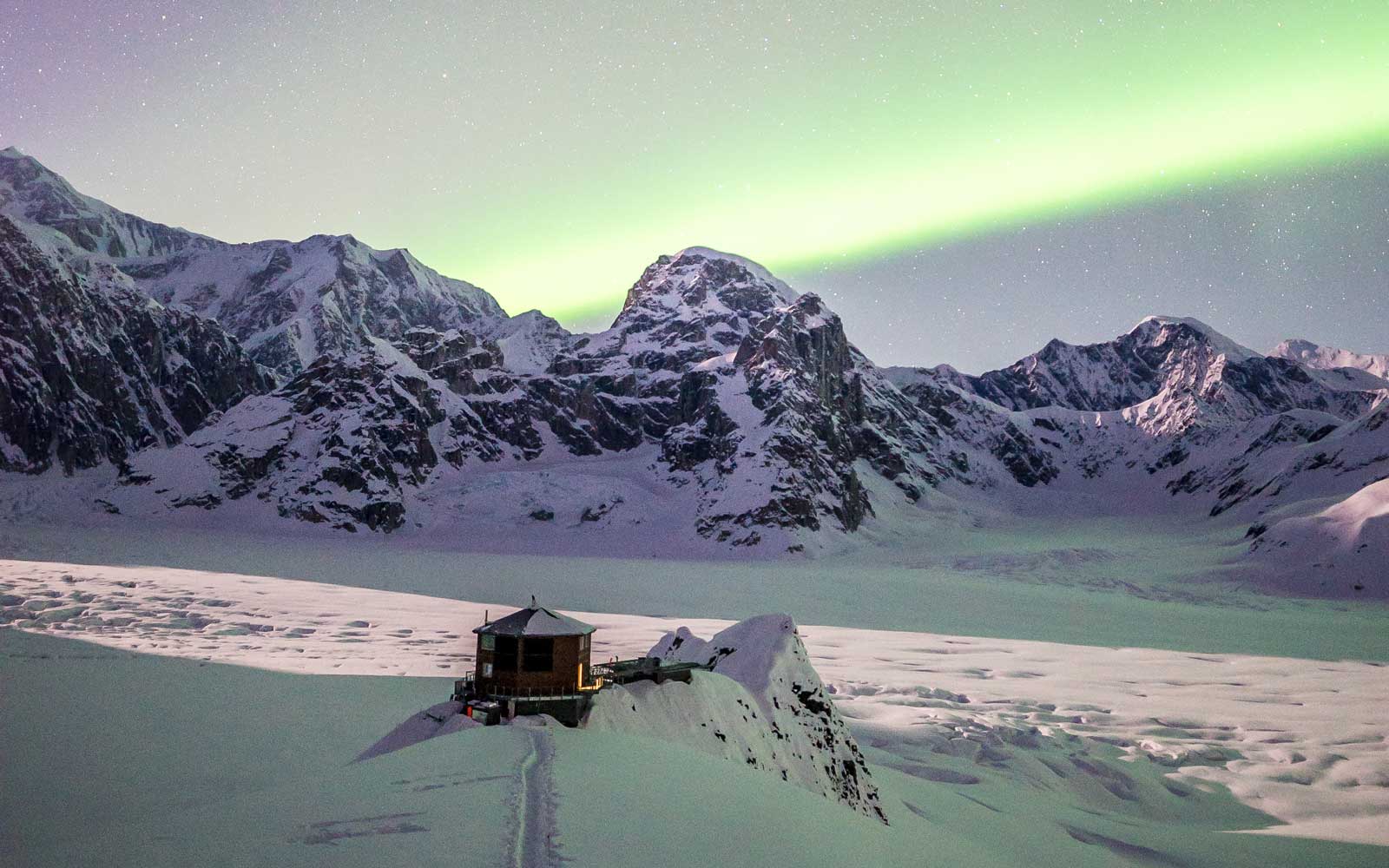
Courtesy of Sheldon Chalet/Chris Burkard
For the most exclusive of northern lights trips, book yourself and up to nine of your closest friends at Sheldon Chalet. The luxurious mountain hut is located atop a glacier on a private stretch of Denali (one of Alaska’s jaw-dropping national parks) with a clear view of America’s tallest mountain. Debuting in 2018, the sleek lodge is nearly carbon-neutral and comes with a concierge, private chef, and personal adventure guides. Pack your itinerary with aurora flightseeing tours, ice fishing excursions, igloo building, and trekking to remote hot springs. Though you’ll probably be just as pleased to lounge around the eco-chic chalet, with wraparound windows for optimal aurora stalking.
Churchill, Manitoba, Canada
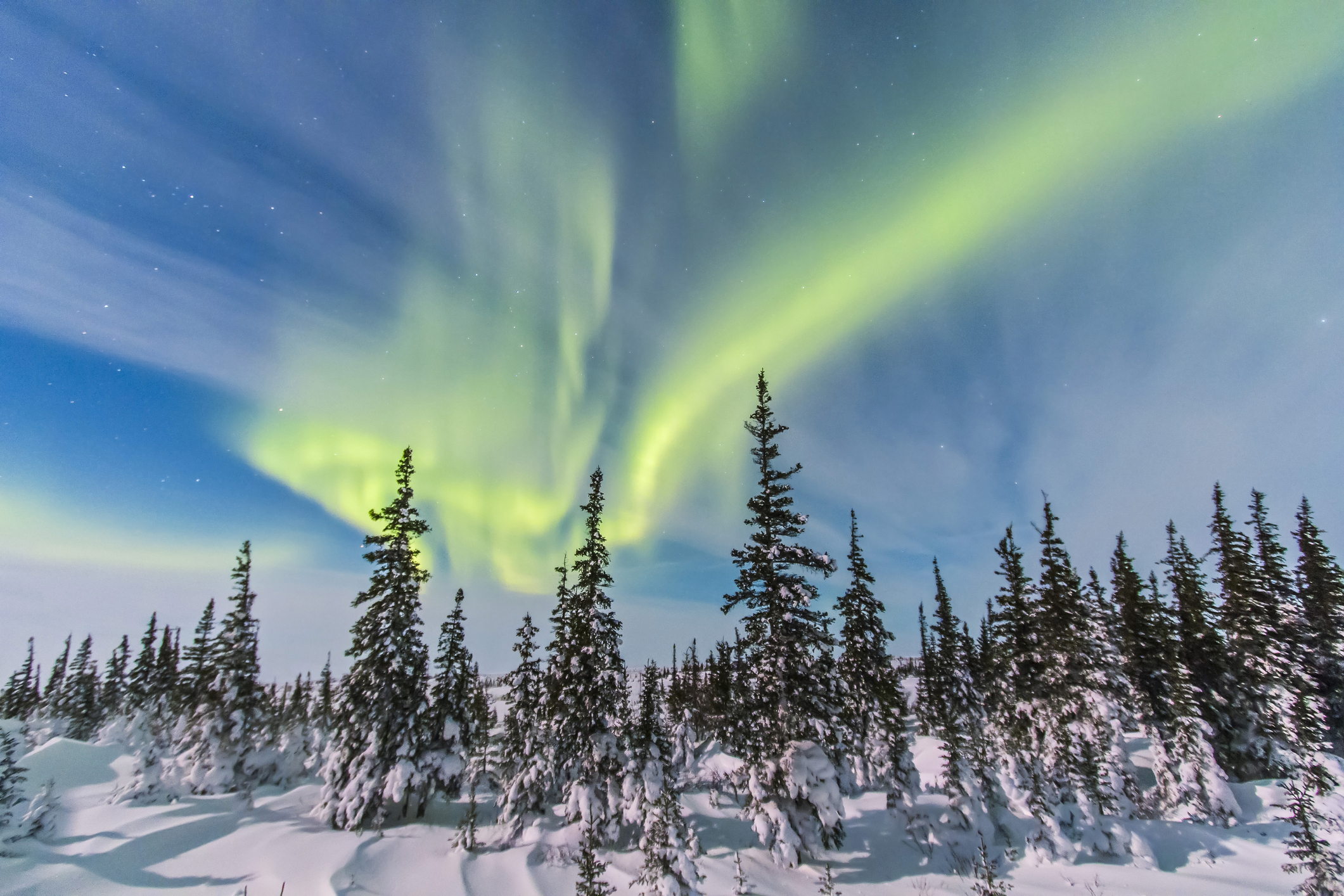
Alan Dyer/Stocktrek Images/Getty Images
For a sure thing, Churchill promises up to 300 nights a year of aurora action. It’s one of the top three places on the planet to see the lights, and though there’s activity year-round, January to March is prime. Watch the glowing scene from a plexiglass-covered dome at the Churchill Hotel, or set out on an aurora hunting expedition via dogsled with Churchill River Mushing. Polar bear sightings are common, too. On a late-winter visit, you may spot female polar bears and their cubs venturing out of their dens during the day.
Fairbank’s Chena Hot Springs, Alaska
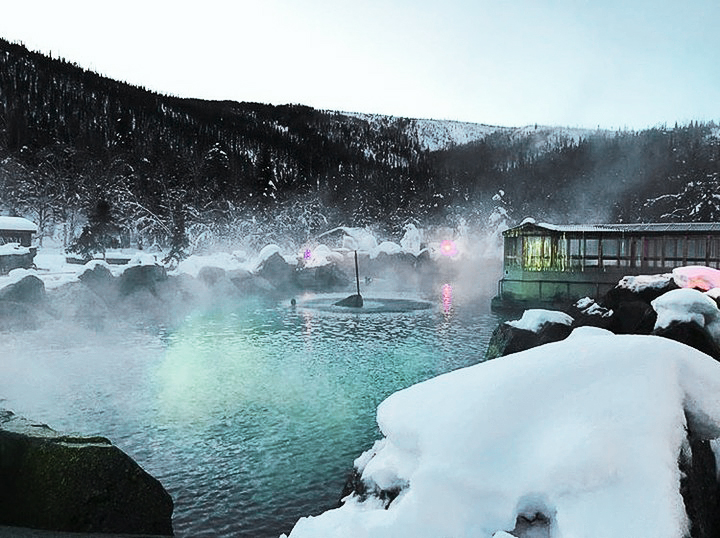
Courtesy of Chena Hot Springs
Chances are you’re going to have to wait for hours for the aurora to make an appearance, so you might as well wait in a natural, mineral-rich steamy pool like the ones you find at Chena Hot Springs. The resort—which offers aurora wake-up calls when the lights appear—stands about 60 miles from Fairbanks under one of the most active aurora bands. The northern lights reign supreme out here, which is why Chena has its own team of aurora chasers that will take guests out, as well as an Aurora Ice Museum. The chapel-shaped museum is crafted from 1,000 tons of ice and snow and pays tribute to the brightest aspects of an Alaskan winter with fab, frozen sculptures illuminated with aurora-colored LEDs.
